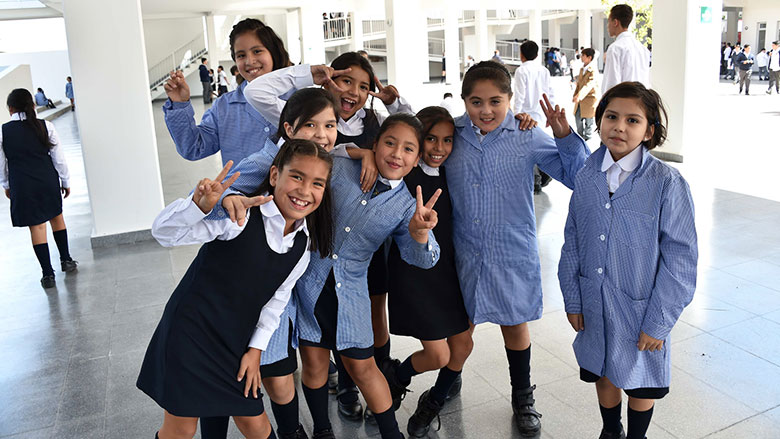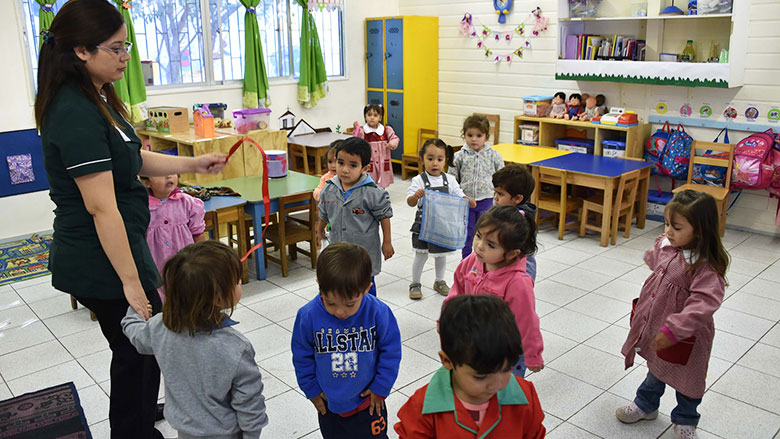Challenge
The Chilean education system faced the challenge of unequal access to quality education, which permeated the entire educational system from primary through tertiary education. At the primary level, since admission decisions were made at the school level, students of lower socioeconomic status were occasionally denied admission to better-quality schools. In addition, high copayments and/or private school fees frequently meant these students were unable to afford the better-quality schools. Similarly, poor students were often unable to afford tertiary education. As Chile made substantial progress in monetary poverty reduction, measuring vulnerability to multidimensional deprivations became equally important. Likewise, in its efforts to make public resources available for the people who needed them the most, the government sought to improve resource targeting and to reduce inefficiencies by replacing its predominantly self-report-based data-gathering system with a new targeting system that relied on administrative data.
Approach
Working with the government of Chile, the World Bank designed the Social Inclusion for Shared Prosperity Development Policy Financing operation to support government efforts to promote equal opportunities in education, strengthen institutions for poverty measurement, and enhance targeting mechanisms social programs. The operation effectively supported the government in kick-starting the education reform process and in getting traction during implementation. Gradual roll-out of the reforms allowed the government to assess the results of the pilots and to incorporate lessons learned before scaling up. The Bank provided technical assistance on poverty measurement and on the design and implementation of an integrated social information system, and it produced a study proposing different institutional arrangements for poverty measurement and a diagnostic of the Social Information Integrated System that served as a basis for the Household Social Registry (HSR).
Results
The operation effectively supported the Chilean government in kick-starting its education reform process and getting traction during implementation. Several key results were achieved, including:
- The allocated nominal budget for the Ministry of Education increased by 13 percent in 2015 and by 16 percent in 2016, relative to an increase of only 6 percent in 2014.
- In the single region chosen for the first year of implementation, the lowest grade in each school receiving public funding rolled out a centralized, regulated admission system with the result that 75 percent of applicants received their first preference for school admission. In the second year, the selection system was rolled out in four regions and applied to all grade levels.
- The elimination of copayment has been widely accepted. As of 2016, 783 schools had applied for this system from a total of 5,730 private subsidized schools in Chile.
- The Preferential School Subsidy (SEP) was expanded. The SEP effectively eliminated tuition fees for vulnerable students in most private subsidized schools. In 2016, 58.5 percent of enrolled students received the SEP, while in December 2015 only 38.3 percent of enrolled students had received it.
- The number of students awarded scholarships for tertiary education has increased significantly. In 2016, 48,555 students received full scholarships during their first year, compared to 2,479 in December 2015.
- Improving the quality of public tertiary education is a long-term objective. Resources to public universities have been increasing since 2015, with a target to increase capital expenditures in 2017 to 22.1 million Chilean pesos, up from 10.3 million in 2015.
The new HSR contains information on approximately 12.7 million individuals, accounting for 72 percent of the Chilean population, relative to 46 percent covered by the old system
Bank Group Contribution
The World Bank, through the International Bank for Reconstruction and Development, provided a loan in the amount of US$ 100 million to finance the Social Inclusion for Shared Prosperity Development Financing operation.
Partners
The success of this operation was achieved through close coordination between the Ministry of Education, the Ministry of Social Development, and the Budget Office (Dirección de Presupuestos) of the Ministry of Finance. The latter, the Bank’s main counterpart in Chile, helped coordinate the efforts and relevance of the policies and actions taken to achieve the operation. The Ministry of Education’s efforts, particularly the Direction of Higher Education and the PACE program (Programa de Acompañamiento y Acceso Efectivo a la Educación Superior) were crucial to understanding the thrust of the educational reforms and their effects on inclusion. Finally, the Ministry of Social Development’s role was essential to understanding the changes in the new monetary poverty measurement methodology, the components of the multidimensional poverty measure, and the characteristics of the new social-information-based system to target social programs.

